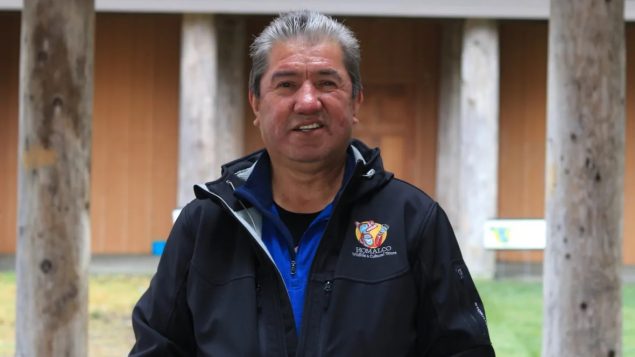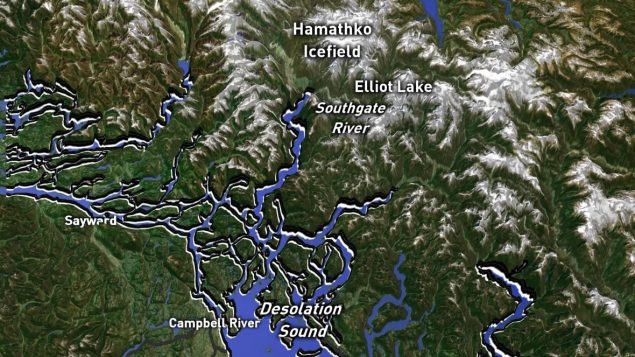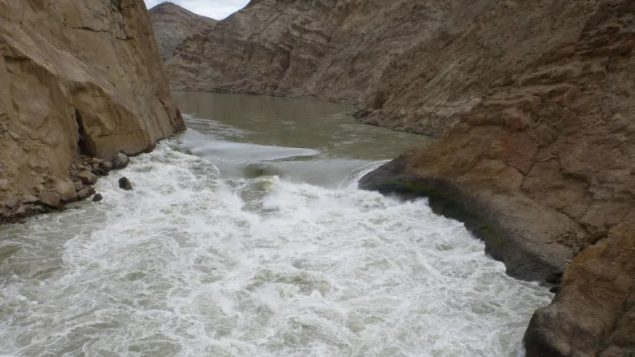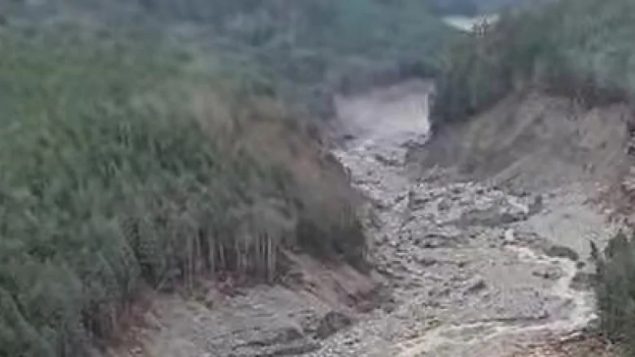Efforts to save British Columbia’s embattled salmon stocks have taken another turn–and another blow–as they continue to face life-and-death challenges to their survival.
The CBC’s Yvette Brend reports that a massive landslide on the mainland about 300 kilometres northwest of Vancouver in November has reshaped a large portion of the West Coast province’s coastal landscape.
The slide propelled about 7.7 million cubic metres of debris into Bute Inlet and was, scientists told Brend, the equivalent to a magnitude 4.9 earthquake.
Watch | Footage from helicopter pilot’s camera as he discovers the magnitude of the debris field:
(Helicopter pilot Bastian Fleury flew to B.C.’s Southgate River on Dec. 10 to investigate why trees and logs were floating down the nearby Bute Inlet. The pilot found evidence of a massive landslide that had carved the creek bed into a canyon.)
A First Nations chief from the area says the landslide will have wide-spread consequences.
Darren Blaney of the Homalco First Nation told the CBC’s Rafferty Baker the effects on chum, coho and pink salmon would add to the already dwindling stocks.
“As the salmon stocks continue to decline, we’re getting concerned about food security,” Blaney said.
“Our chum stocks have declined. A year ago we only got 1,200 of our 4,000 allocation of chum and our chum stocks have been getting less and less reliable.”
Blaney was scheduled to visit the area–about 115 kilometres of Powell River–by helicopter today.

Homalco First Nation Chief Darren Blaney is pictured in a December 2019 photo. (CBC/Chantelle Bellrichard)
When he first saw images of the damage, he told Rafferty his first thought was the salmon; there would have been eggs, he said, in the gravel spawning grounds in the river.
“It’s one of our more productive river systems … for chum, and coho and pinks as well, so it’s a big loss for us.”
“I’m not sure what kind of spawning beds will be left.”
Rafferty reports that geologists and seismologists believe that the slide–on Nov. 28–began in the Coast Mountains when an initial overflow into a glacial lake caused a huge wave.

(CBC News)
That in turn caused what the scientists call an “outburst flood” that sent millions of cubic metres of mud and debris into Elliot Creek, then Southgate River, and finally into Bute Inlet and the Pacific Ocean.
Because the area is so remote, the slide went virtually unnoticed for weeks.
Fishers, First Nations and salmon in British Columbia are already feeling the effects of the so-called Big Bar landslide on the Fraser River, north of Lillooet, that prevented many salmon from reaching their spawning grounds.

The Big Bar landslide dumped about 75,000 cubic metres of rock into the Fraser River in late 2018. (Fisheries and Oceans Canada/Twitter)
That slide–believed to have occurred in November 2018–wasn’t discovered until June 2019.
Earlier this month, the federal government said it would be spending $176 million to install a permanent fishway through the site of the landslide.
Later that month, B.C. First Nations leaders issued an urgent call to action to the federal government to take immediate action to save endangered sockeye.
With files from CBC News (Yvette Brend, Rafferty Baker, Karin Larsen) RCI







For reasons beyond our control, and for an undetermined period of time, our comment section is now closed. However, our social networks remain open to your contributions.